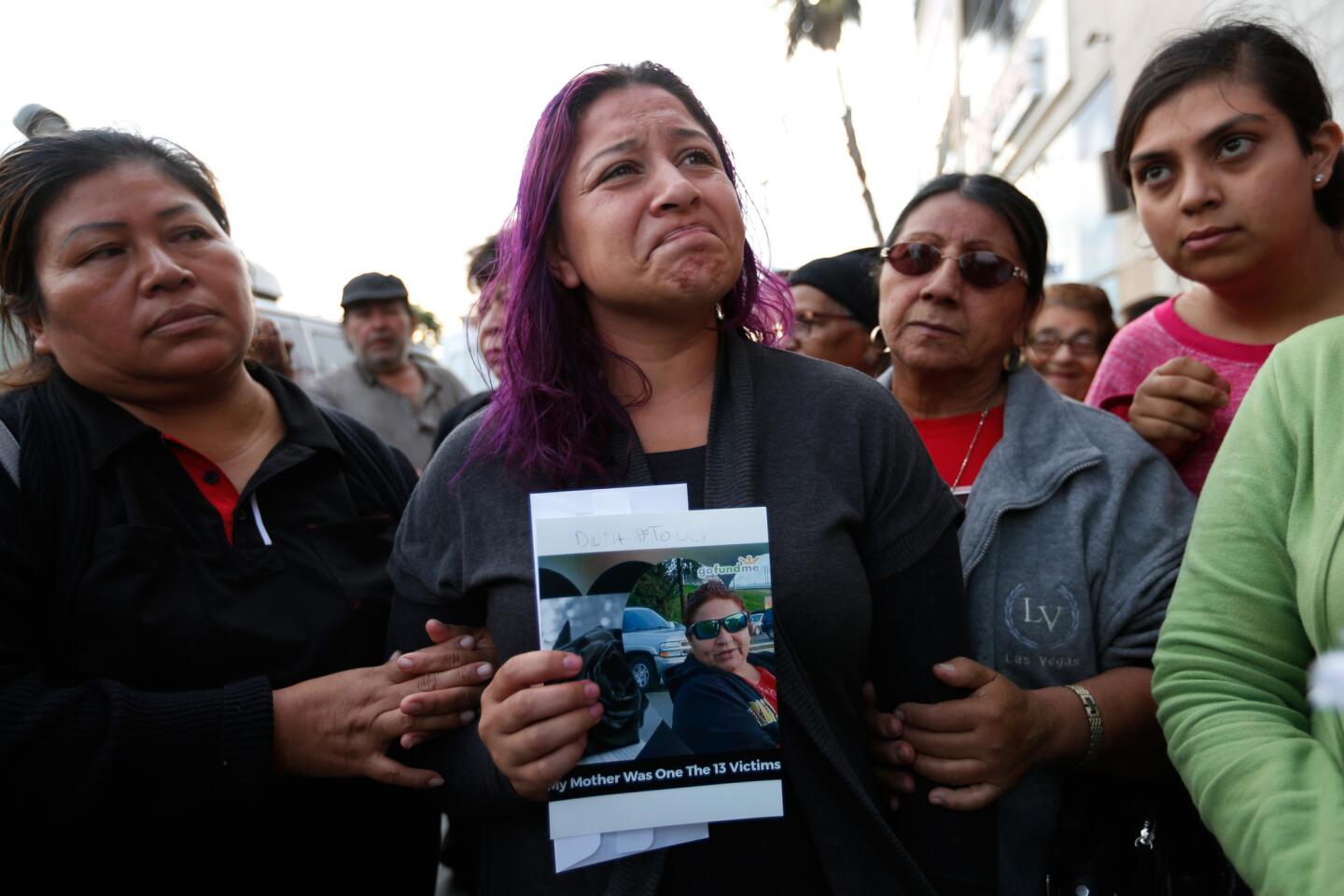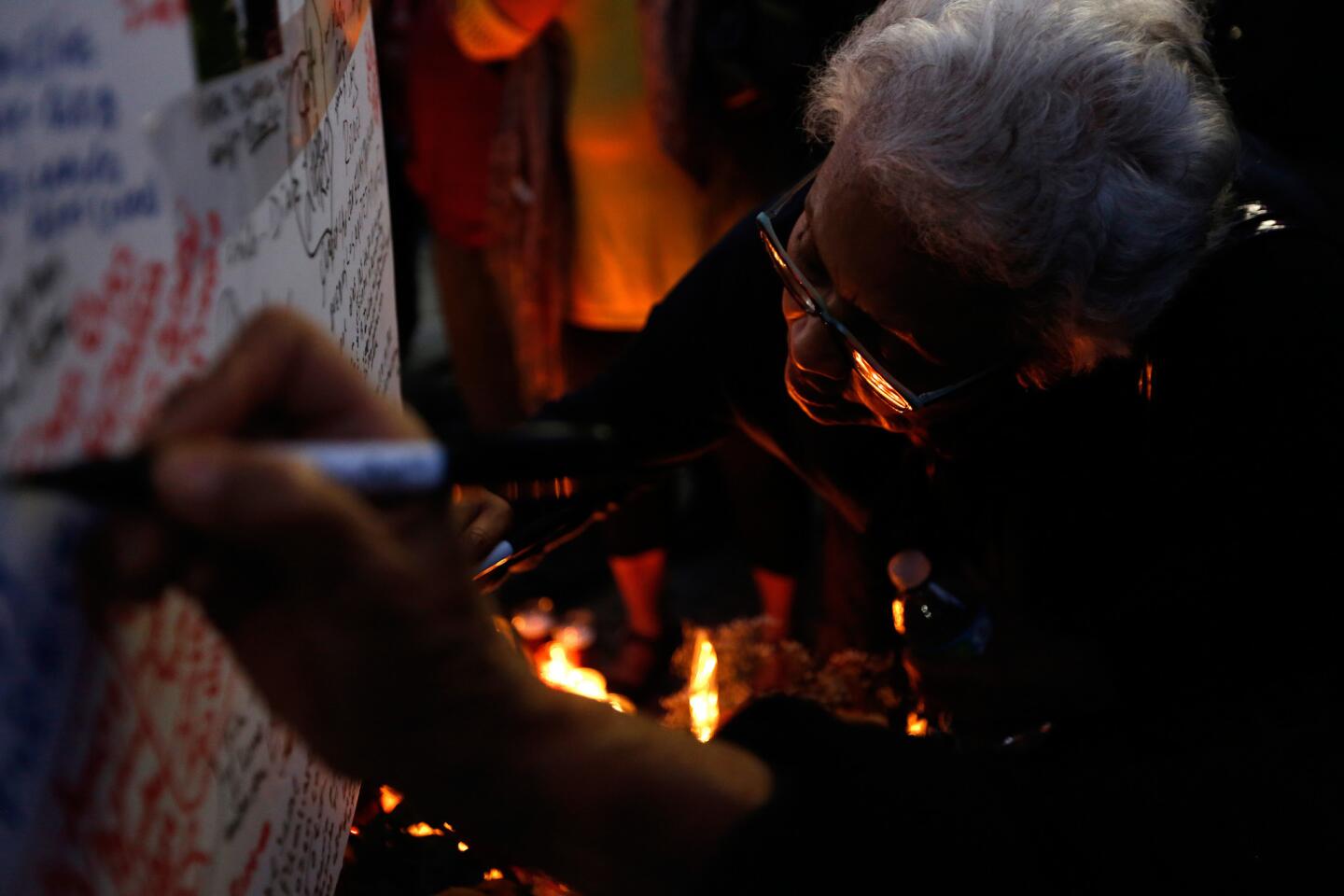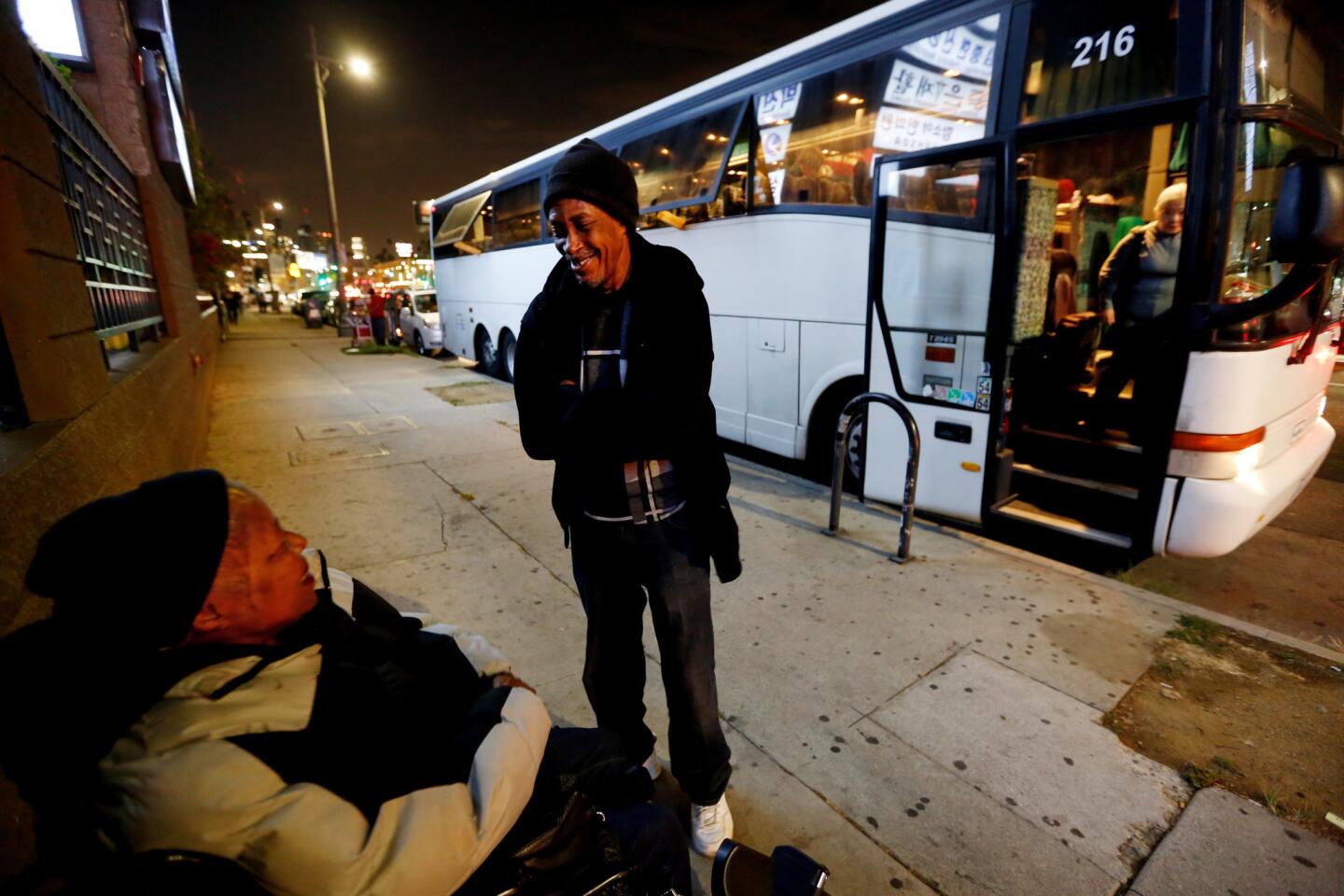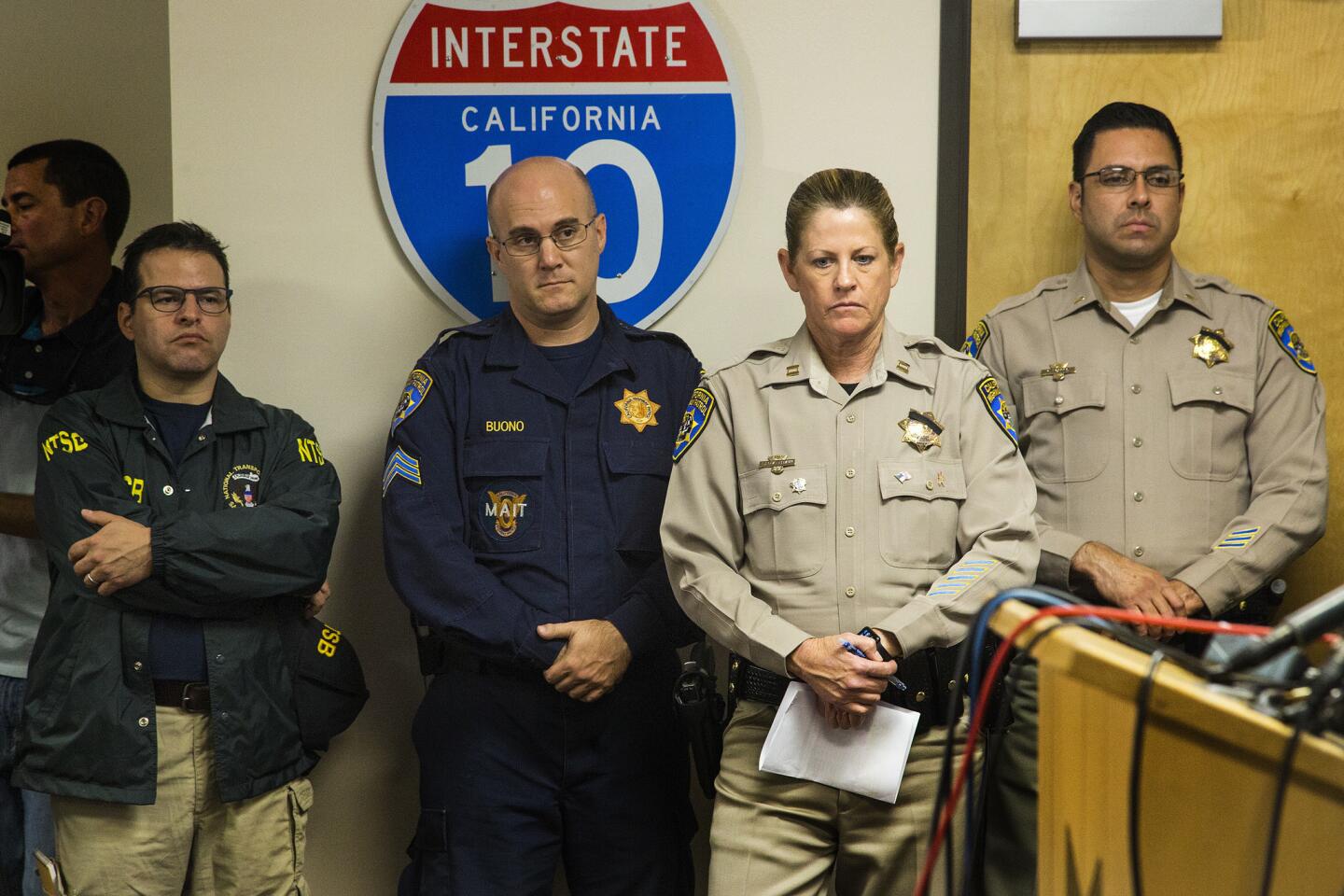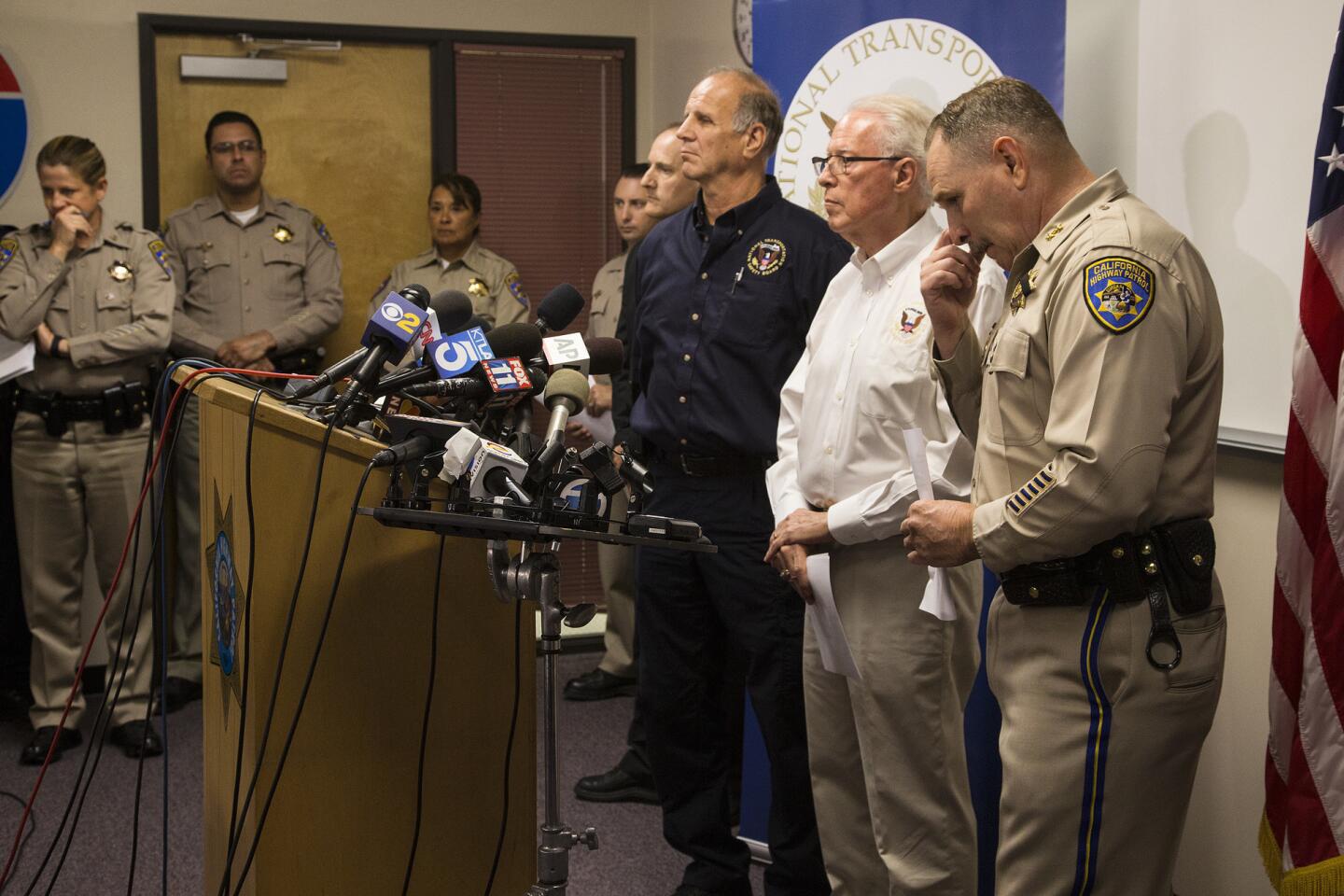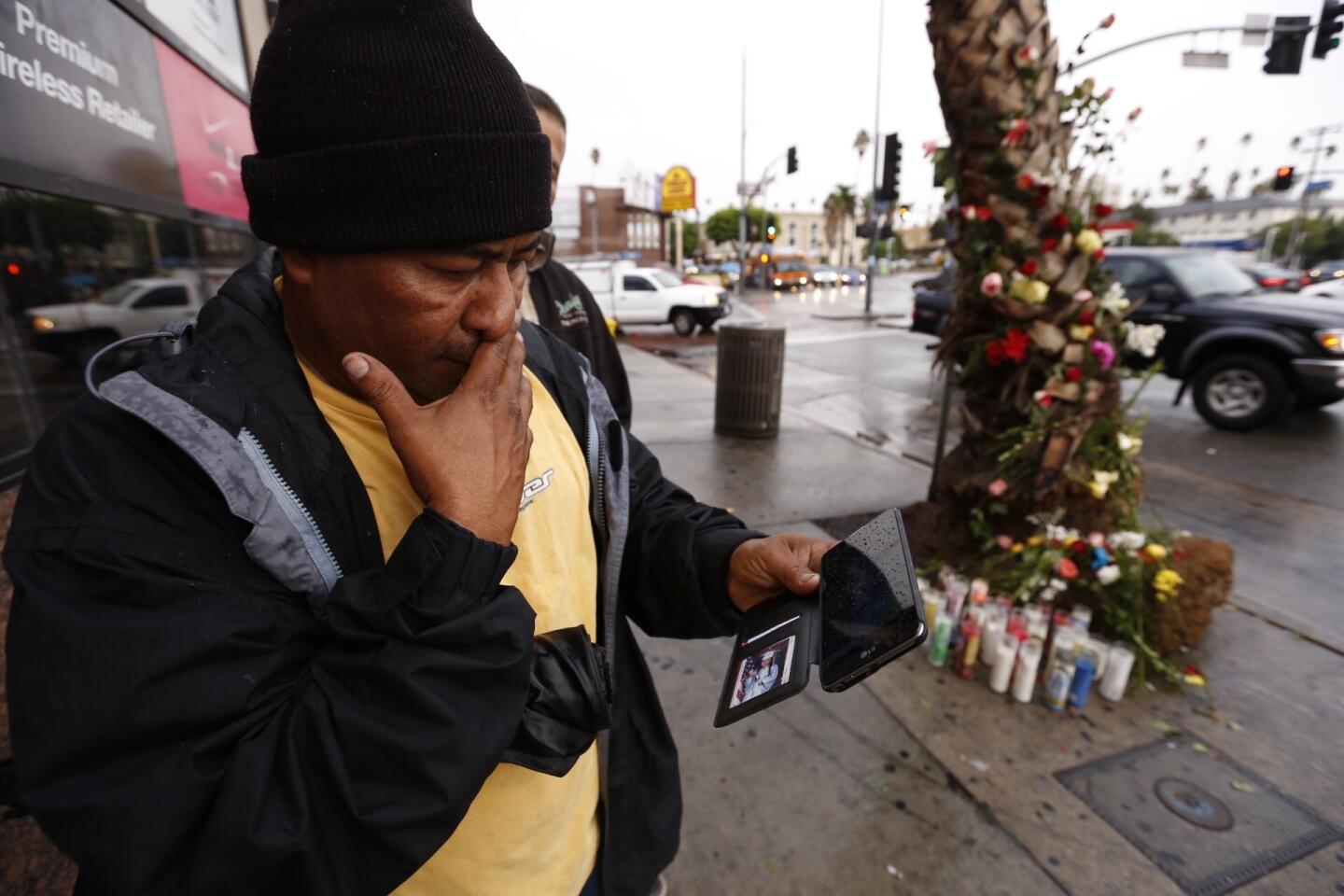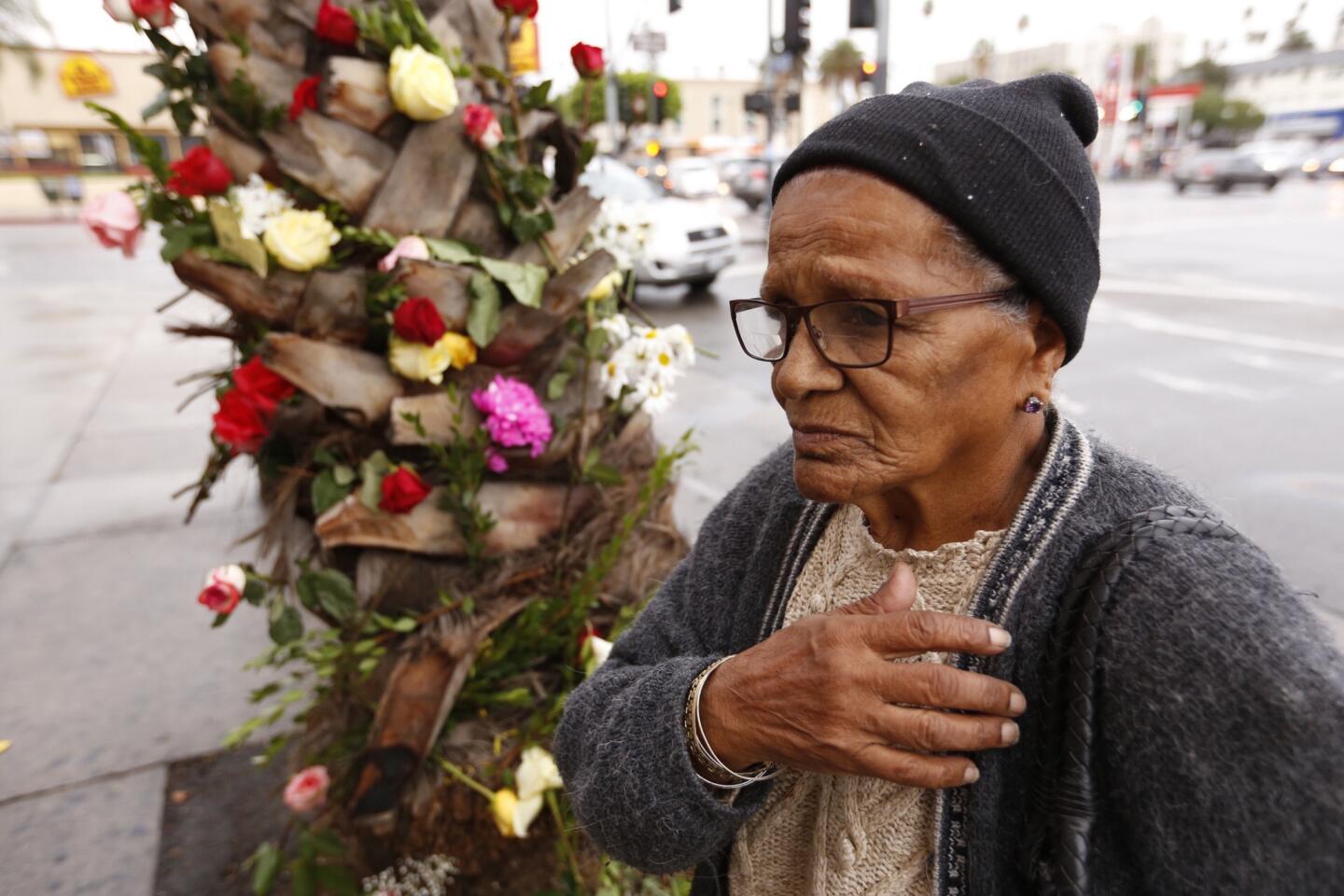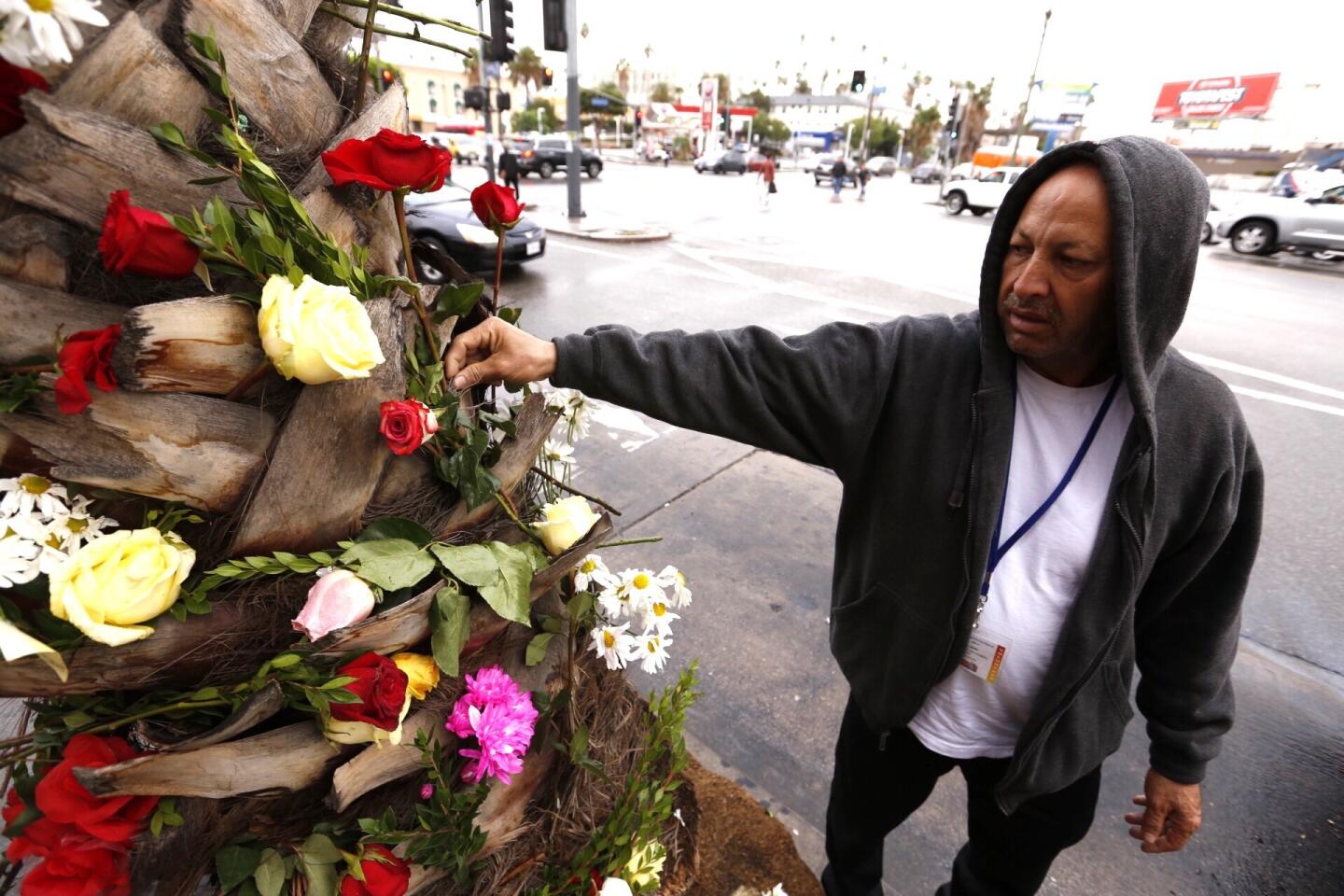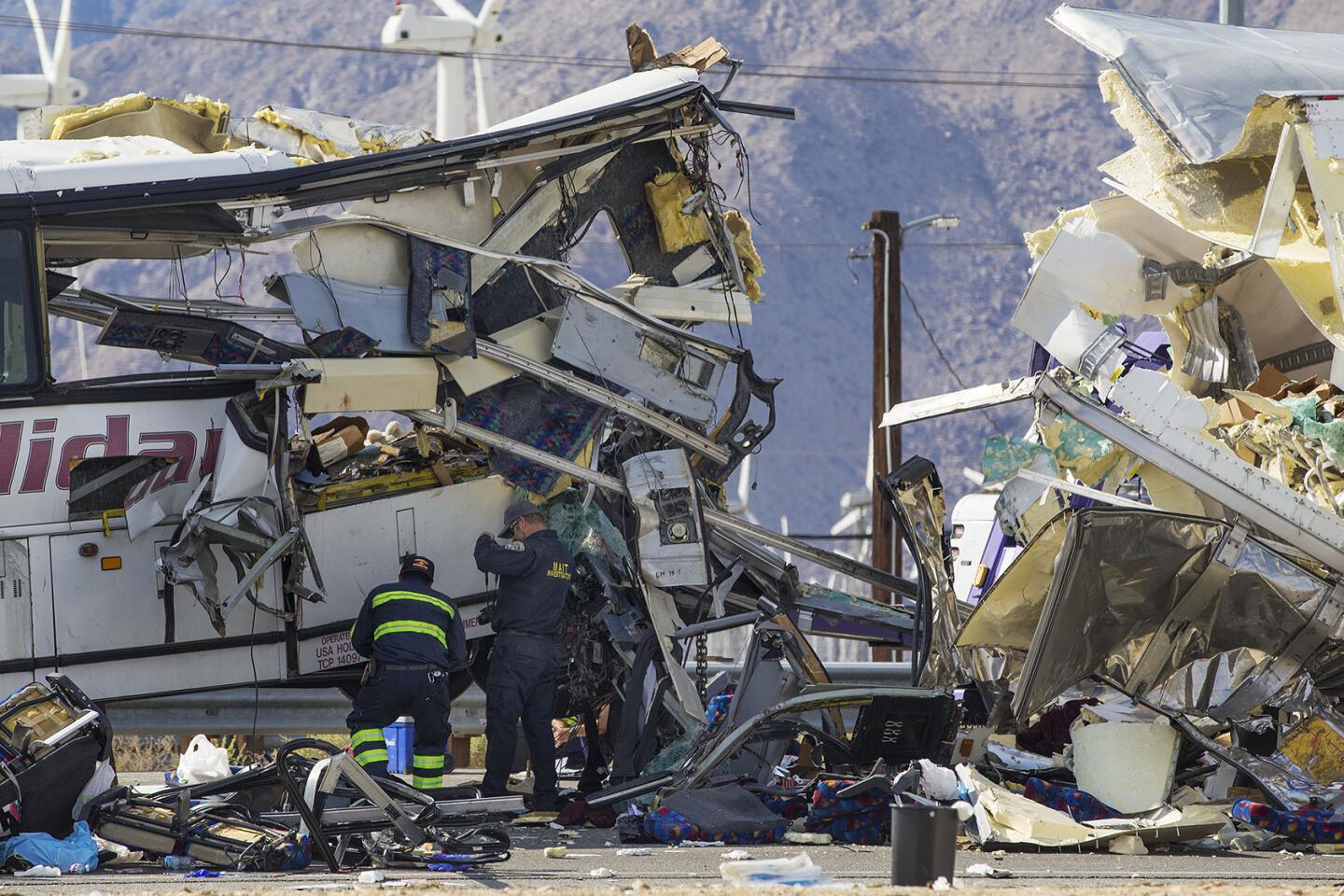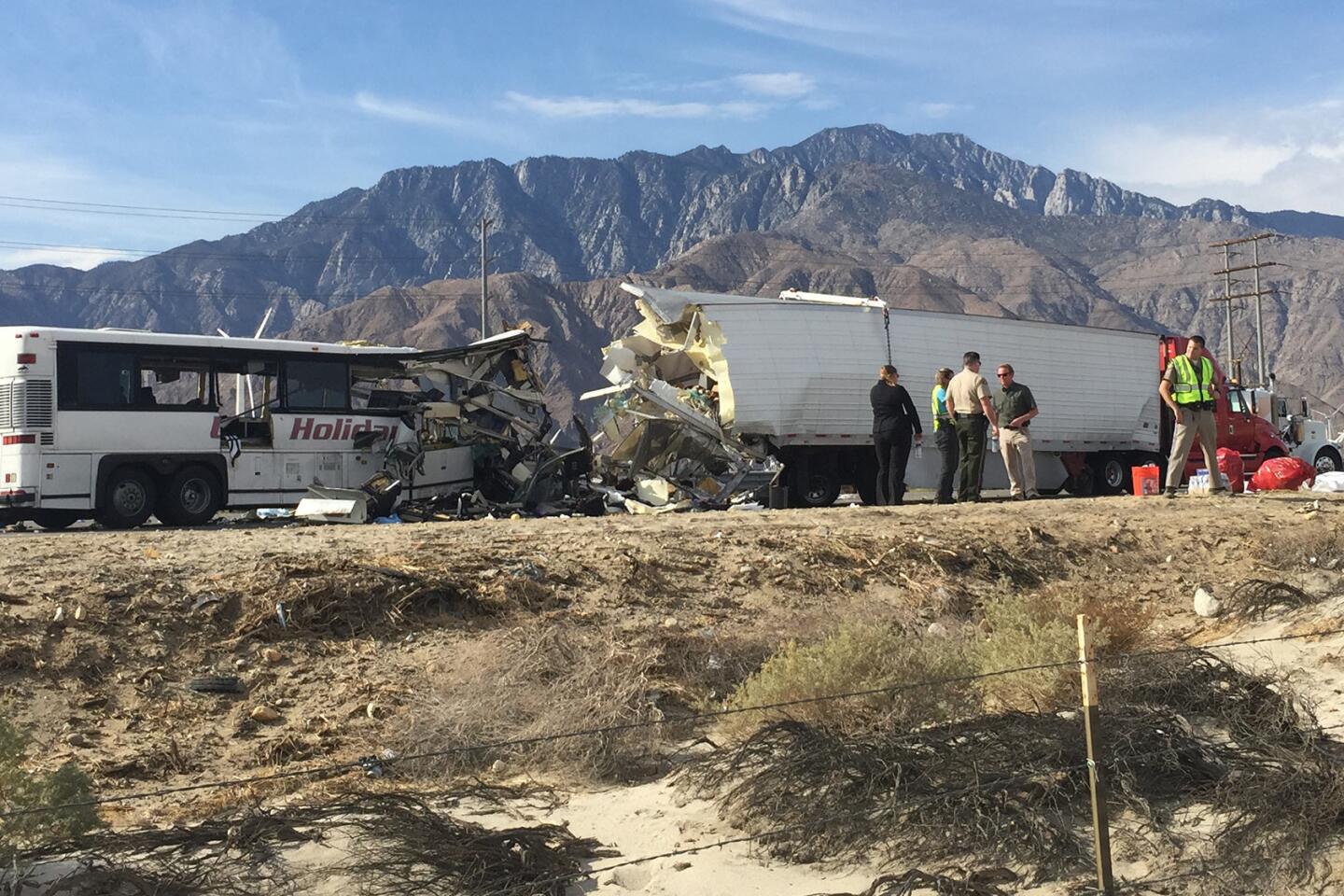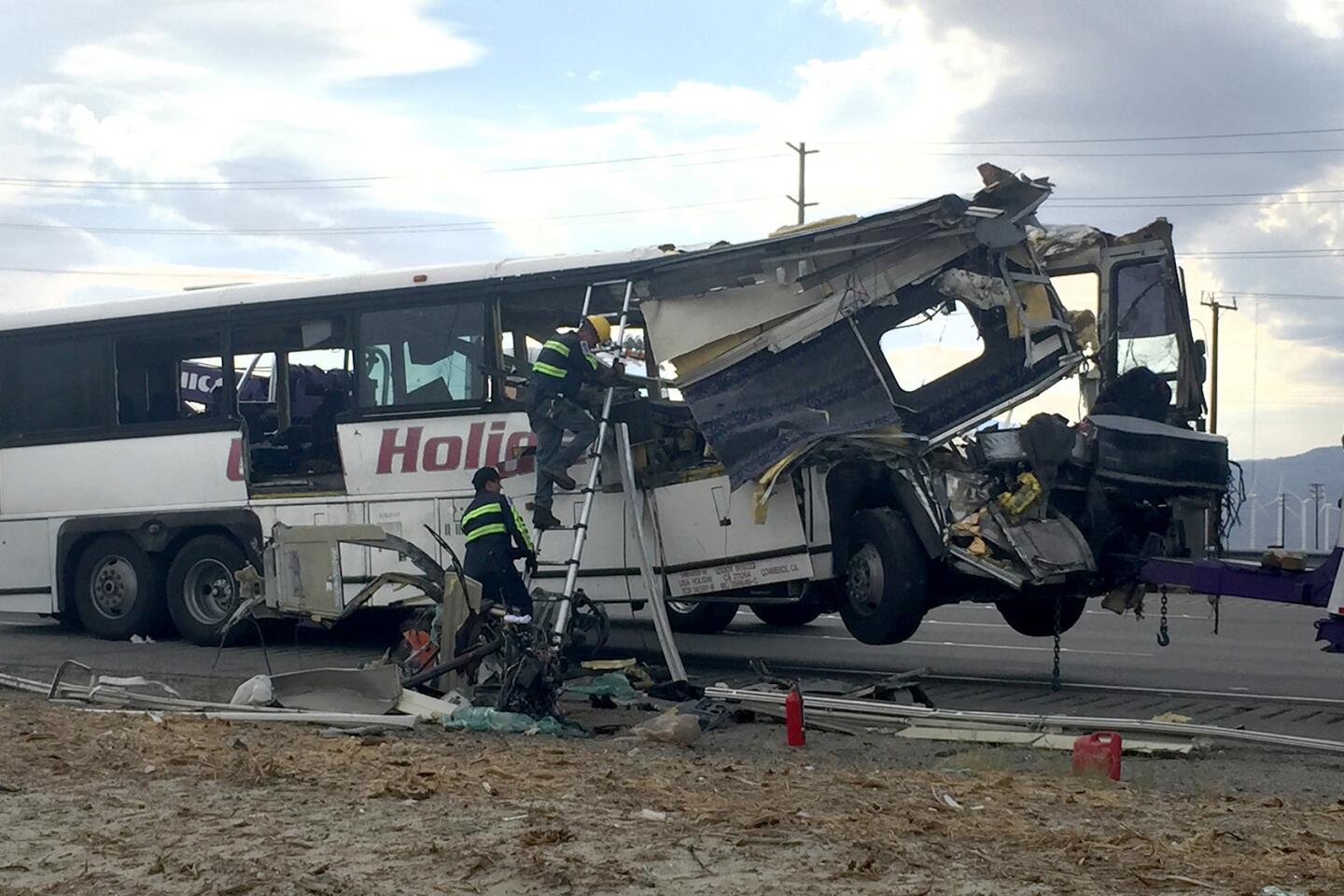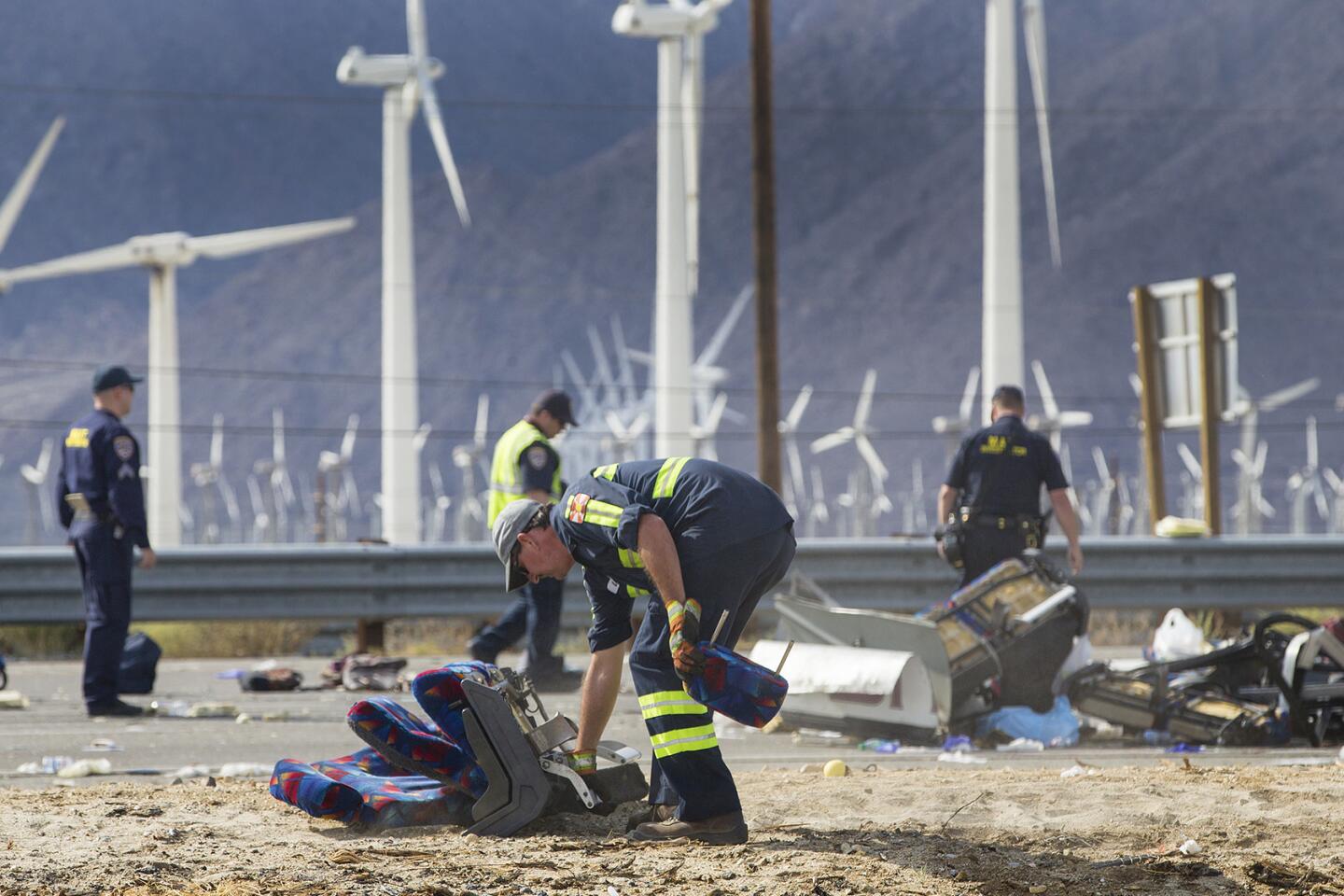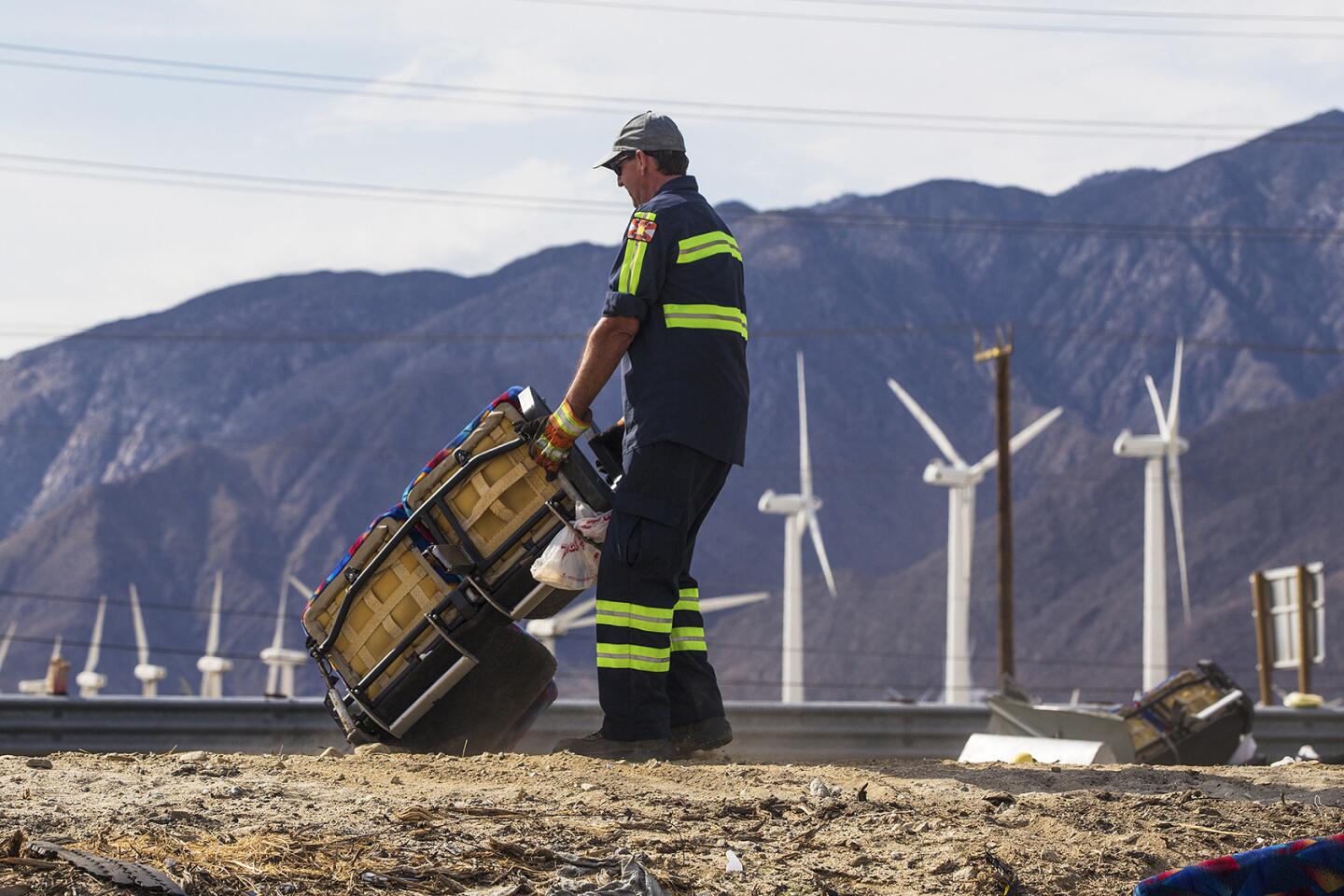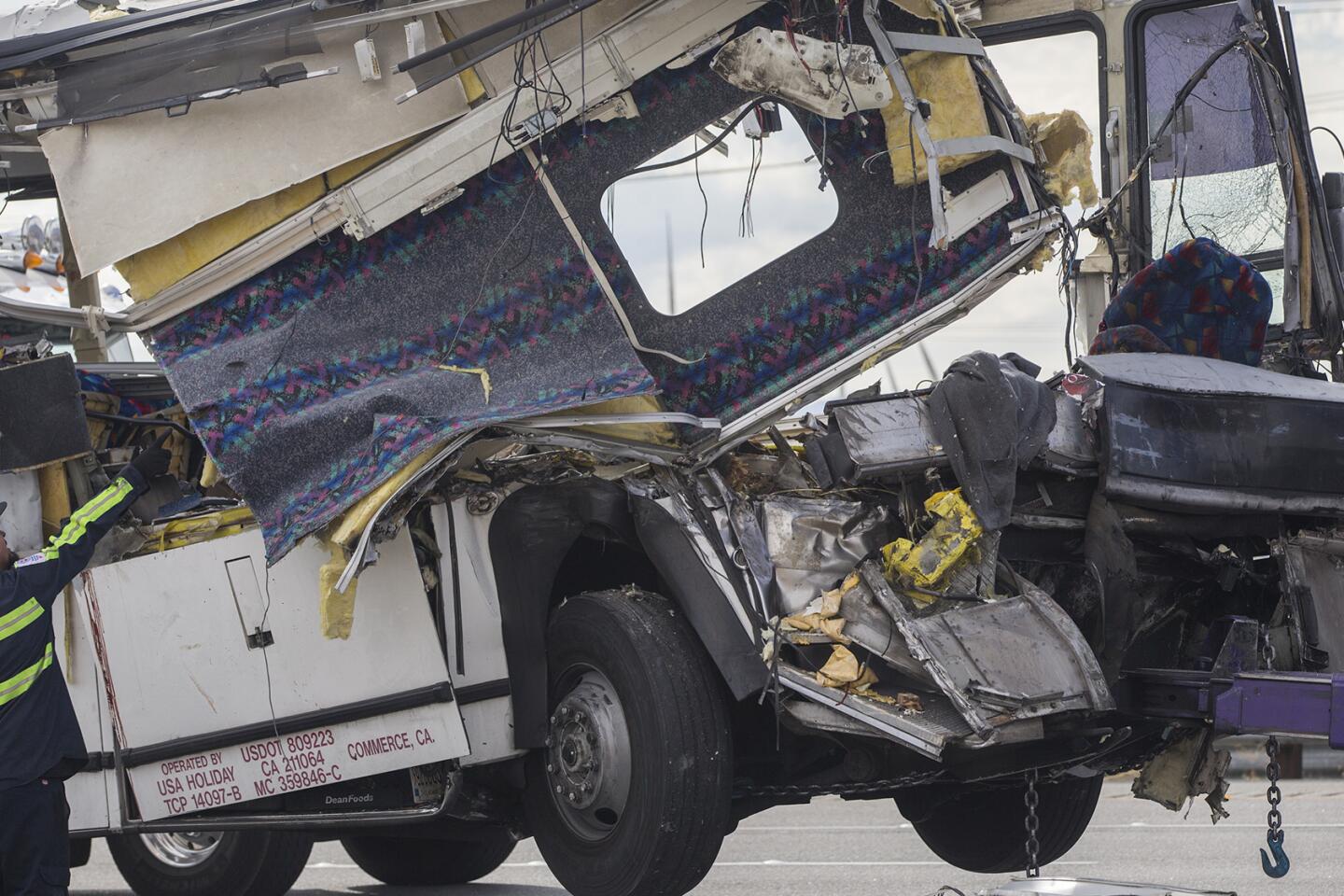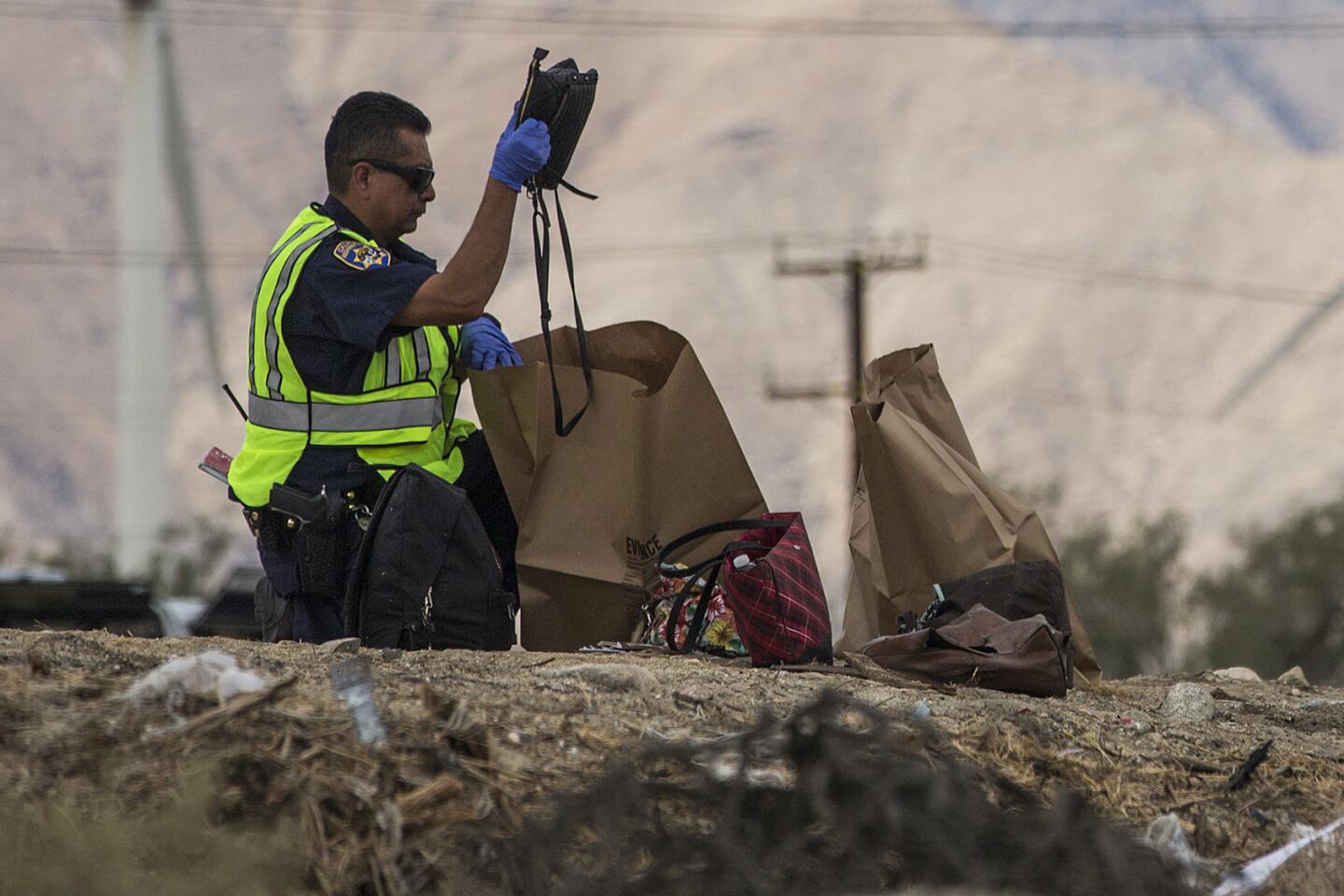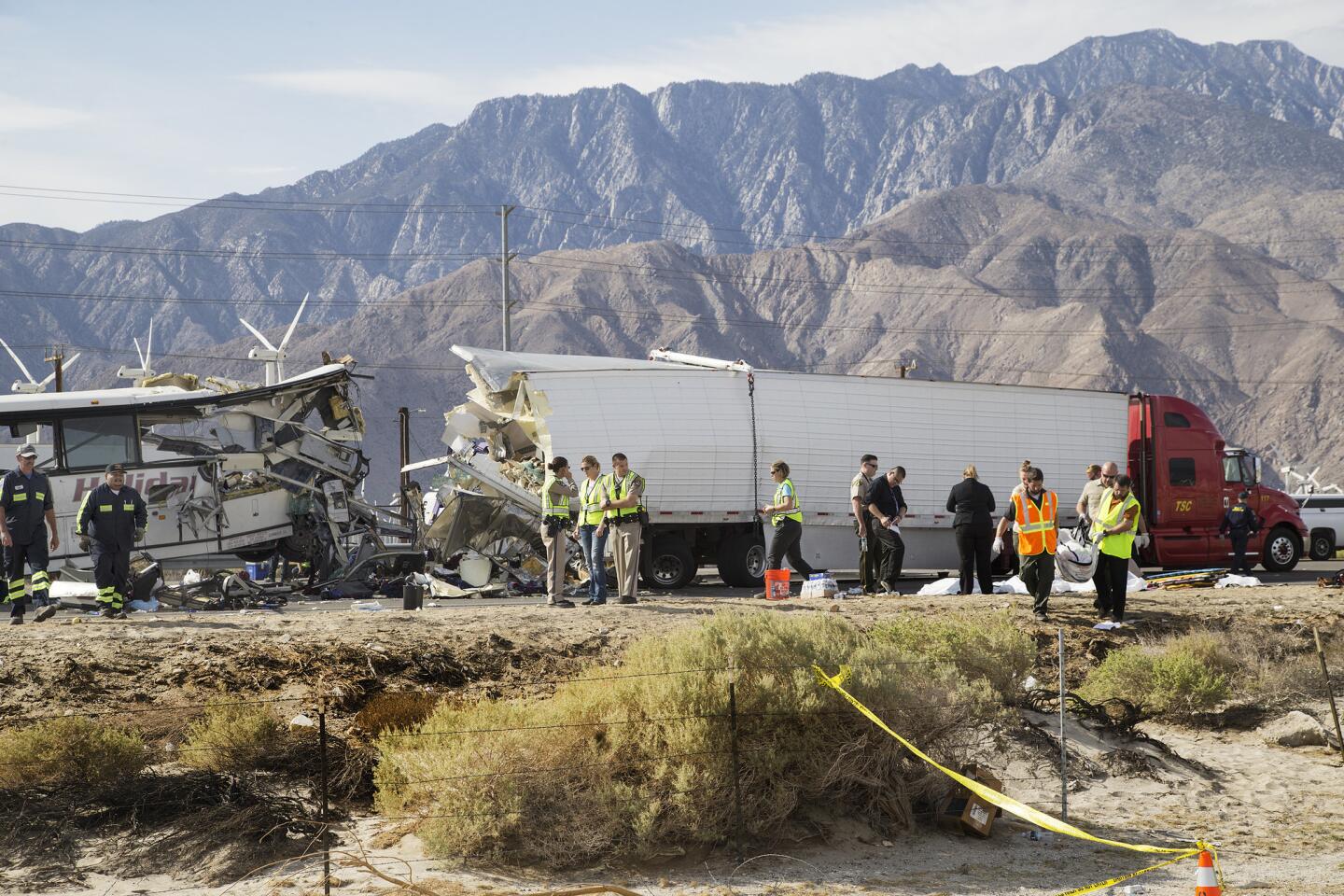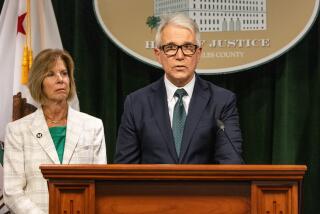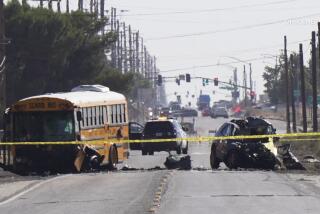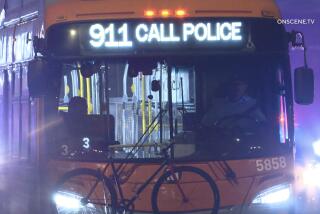Most of the 13 tour bus crash victims have now been identified

California Highway Patrol Border Division Chief Jim Abele answers questions about a tour bus crash in Desert Hot Springs that left 13 people dead.
Riverside County coroner’s officials on Monday identified all but one of the 13 victims killed in a horrific crash between a tour bus and a big rig truck near Palm Springs.
An additional 31 people were injured when the bus crashed into the truck at 5:17 a.m. Sunday near Desert Hot Springs. The bus was headed west on the 10 Freeway on the way to Los Angeles, officials said.
The victims included the bus driver, Teodulo Vides, 59, as well as Isabel Jimenez Hernandez, 66; Rosa Ruiz, 53; Gustavo Green, 62; Zoila Aguilera, 72; Milagros Gonzales, 72; Conception Corvera, 57; Aracely Tije, 63; Dora Galvez de Rodriguez, 69; Elvia Sanchez, 52, Ana Gomes de Magallon, 71, and Yolanda Mendoza, 69, according to Riverside County coroner’s records.
All of those identified were residents of Los Angeles, except Corvera, who was a resident of Palmdale.
Federal and local investigators are probing the cause of the crash, the deadliest in California in several decades.
Authorities said the crash occurred when the USA Holiday tour bus slammed into the back of the truck’s trailer, crushing the front third of the cabin. Most of those who died appeared to have been sitting toward the front of the bus. Many had fallen asleep after a night of gambling at a casino in Thermal near the Salton Sea.
Ten of the victims were women and three were men, the Riverside County coroner’s office said.
The front of the white tour bus was crumpled and largely destroyed, suggesting that the bus was traveling much faster than the truck, officials said. They cautioned that it was too early to say whether the bus driver, who died in the crash, was speeding.
Investigators will look at whether the bus driver fell asleep, had a heart attack or was under the influence of drugs or alcohol, said CHP border division chief Jim Abele.
California Highway Patrol officers in marked patrol cars had been periodically slowing and stopping traffic along the stretch of the 10 Freeway Saturday night as a Southern California Edison crew worked on electrical wires that crossed over the roadway.
Traffic had begun to move again before the collision, CHP Sgt. Daniel Hesser said, but speeds were much slower than the typical freeway flow.
Authorities hope to recover a data recorder that would reveal how fast the bus was traveling and whether the driver braked before impact. However, the bus, manufactured in 1996, may not have a recorder on board, officials said.
“Essentially, we just don’t have all the pieces to the puzzle,” Abele said. “We may not be able to determine exactly why the accident occurred because the driver has been killed.”
Employees from the National Transportation Safety Board are due to arrive in Southern California on Monday to assist with the investigation, officials said.
Police and rescuers came across a horrific scene of destruction.
“In almost 35 years, I’ve never been to a crash where there’s been 13 confirmed fatals,” Abele said. “It’s tough … you never get used to this.”
Survivors treated and released at Eisenhower Medical Center in Rancho Mirage on Sunday described the moments their slumber was broken by cries of anguish.
Taking a deep breath and wiping away tears, Miguel Martinez, 66, recalled the moment of impact.
“The truck was moving very slowly,” Martinez said in Spanish. “Our driver slammed on the brakes, then the bus skidded for several yards before crashing into the truck.”
His recollection differed from the official account. The CHP reported that the skid marks were made by the truck’s tires thrust forward by the impact of the bus hitting it from behind.
Martinez said he’ll never forget what he saw next. “Seconds later, people in the bus were screaming for help,” Martinez said. “The front six rows, where 12 people had been sitting, were squashed together. Everyone, dead and alive, was covered with blood.
“The right side of one man’s face was peeled back.”
Martinez was among a dozen survivors transported to Eisenhower Medical Center after the crash.
Ana Car, 61, said she, like most of the passengers, was asleep when the bus crashed into the truck.
She and other survivors credited anonymous Good Samaritans for helping them escape even before firefighters arrived and placed ladders into the bus windows. Sitting in a wheelchair, wincing in pain, Car said most of the impromptu rescuers worked in silence “except to say, ‘It’ll be OK. You’ll be all right’ over and over.”
Rescuers eventually helped her out of the bus, she said, adding: “All I could do was stand by the side of the road and cry and cry because there were still so many others trapped inside.”
The crash bore some similarities to a 2011 crash in the Bronx involving a bus returning to New York’s Chinatown from a Connecticut casino. In that tragedy, 15 people were killed after the bus struck a right-hand guardrail at just under 80 mph. The vehicle flipped on its right side and skidded more than the length of a football field before slamming into the support pole of a highway sign.
The National Transportation Safety Board later determined that the Bronx crash was caused by the driver’s drowsiness and the bus company’s inadequate oversight policies. Phone records and work schedules indicated that the tour bus driver could not have slept for more than three hours at a time in the 72 hours before the grisly collision.
Passengers on Sunday said they boarded the USA Holiday bus the night before at the intersection of Olympic Boulevard and Vermont Avenue for a trip to the Red Earth Casino in Thermal.
In the past, the bus company had used Facebook and Instagram to advertise such trips, saying a $20 ticket covered round-trip travel and 4 1/2 hours of gambling.
The company has advertised similar trips from the San Fernando Valley and Southeast Los Angeles to Las Vegas and casinos across Southern California.
Identifying the victims and some survivors could take days, Abele said, because some were not carrying identification cards or were separated from their belongings when they were taken to the hospital.
The family of Rosalba Ruiz emerged from the Riverside County coroner’s office in tears. The 53-year-old mother of three and grandmother of five from Los Angeles was killed in the crash, said Claudio Fernandez, who said Ruiz was married to his uncle.
Ruiz enjoyed going to casinos and did so often, sometimes weekly, Fernandez said.
“She used to love to go to the casinos, that was part of her hobby,” he said.
“You don’t believe that will happen,” he added. “We went to three hospitals and couldn’t find her and we couldn’t get answers.”
Then, he said, they were told to go to the coroner’s office.
Officials received calls Sunday from Mexican, Australian and Japanese consulates. The majority of the victims were Latino, Abele said.
USA Holiday is an Alhambra-based company that owns one bus and employs one driver, according to federal records.
The company was last inspected by federal transportation officials in April of last year and received a satisfactory rating, according to FreightConnect, a private data provider. No issues with the coach or driver were reported.
The company drove 68,780 miles in 2015, the most recent data available, federal records indicate.
Officials have not identified the bus driver, but neighbors in Alhambra said his name was Elias Vides.
For years, Vides drove buses filled with older passengers to casinos across the Southland, said Sonia Anderson, Vides’ next-door neighbor. At night, he parked the tour bus on the street near his apartment.
Sunday’s crash is among the deadliest in California history.
In Chualar in 1963, 32 Mexican farm workers who were in the Central Valley as part of a work visa program were killed when a freight train struck the flatbed truck on which they were riding.
In 1976, a bus carrying the Yuba City High School choir plunged off a freeway ramp in Martinez and crashed more than 30 feet below, killing 28 students and one teacher.
And in Northern California in 2014, 10 people were killed when a FedEx truck veered across Interstate 5 near Orland and crashed into a bus carrying high school students from Los Angeles.
After that crash, Gov. Jerry Brown signed a law that requires buses manufactured after 2020 that carry more than 39 people to be equipped with emergency lighting that would automatically illuminate after a collision, to aid with evacuation.
The law also requires bus drivers to provide instructions to all passengers on how to use safety equipment and emergency exits before departing.
A separate bill signed into law was drafted following a tour bus crash in San Francisco’s Union Square that injured 19 people. The law requires the CHP to develop protocols for working with cities and counties to increase the number of tour bus inspections within their jurisdictions.
ALSO
L.A. County sheriff’s sergeant dies after crash in Compton
Obama is due back in L.A. Here’s where to watch out for traffic
Rain moves into Southern California with a bigger storm forecast for later in the week
UPDATES:
10:55 a.m.: This article has been updated with identification of a 12th victim.
9:35 a.m.: This article has been updated with identification of 11 of the victims.
This article was originally published at 6:35 a.m.
More to Read
Sign up for Essential California
The most important California stories and recommendations in your inbox every morning.
You may occasionally receive promotional content from the Los Angeles Times.
